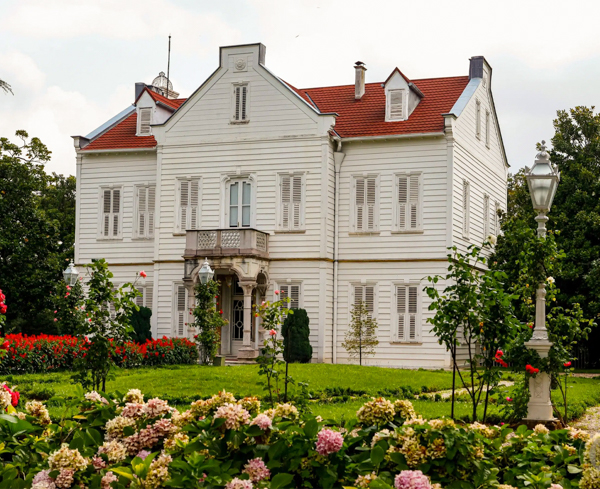Maslak Pavilion
Witness to the Princely Years of Abdul Hamid II

Maslak Pavilion is not only a beautiful and historic building but also a place of dreams. It serves as a sanctuary where visitors can escape the hustle and bustle of everyday life and envision a better world.
Maslak Palaces hold significance as one of the important structures where Sultan Abdul Hamid II spent his princely years with his family. Although historical records are somewhat unclear, it is known that the initial construction in the area began during the reign of Sultan Mahmud II, with various additions made later during Sultan Abdülmecid’s rule. In 1868, the Maslak Palaces were allocated to Abdul Hamid II and his family, transforming the site into a sprawling estate. Over time, the complex, known as Maslak Çiftlikât-ı Hümâyûnu, evolved with additional buildings constructed to meet various needs.
The palace complex comprises several sections, including Mâbeyn-i Hümâyûn (reception hall), Kasr-ı Hümâyûn (harem), Seyir Köşkü (horse training observation pavilion), Ağalar Dairesi (officers’ quarters), Hamam (bathhouse), Bekçi Odası (watchman’s room), Telgraf Odası (telegraph room), Su Deposu (water reservoir), At Ahırı (stable), Limonluk Bahçesi (lemon garden), and Çadır Köşkü (tent pavilion). Today, structures such as Mâbeyn-i Hümâyûn, Kasr-ı Hümâyûn, Limonluk Külhanı, Ağalar Dairesi, and Çadır Köşkü have survived.
The Turkish house concept embodied in the Maslak Palaces represents elegant examples of 19th-century Ottoman residential architecture. The palaces are closely associated with Abdul Hamid II, who played a significant role during his years spent here. Living a modest life among the people, he developed interests in carpentry, gardening, and farming.
Remaining in the personal possession of Abdul Hamid II until 1924, the palace complex was later used as a military preventorium. After restoration in 1984, the Maslak Palaces were transferred to the National Palaces and opened to the public. The gardens of Maslak Palaces also serve as venues for national and international receptions. This historical complex is invaluable for its insights into the life of Abdul Hamid II and for showcasing beautiful examples of Ottoman architecture.